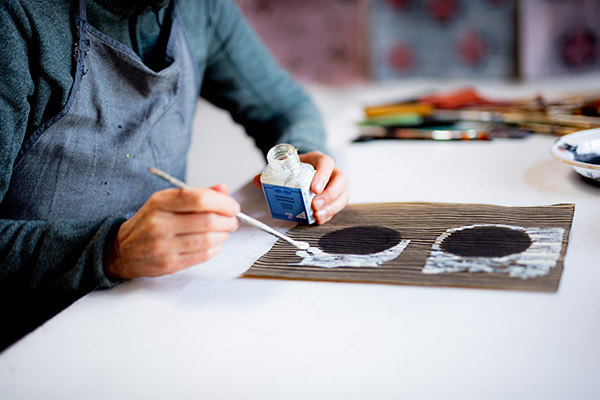
Take a moment to close your eyes.
Imagine an earlier self. Recall a memory when a song came on that spoke to you. Think about a time you wrote a poem, painted a picture, or worked with your hands.
How did you feel in that moment?
That’s what Creative Arts Therapies can help you rediscover. And while the therapeutic value of CAT is not always recognized, it is a flexible and effective approach that offers an array of expression—and healing—accessible to all.
Used as an umbrella term for art, dance/movement, music, and drama therapies, Creative Arts Therapies create opportunities reach people in authentic ways, allowing them to experience healing dynamically. As a dance/movement therapist here at NYCFL, I tend to gravitate towards body-based approaches—understanding the disconnect between mind and body that occurs during active addiction—while also integrating other forms of artistic expression in my practice. Our clients are deeply creative and talented, and tapping into this allows for another pathway towards recovery.
I have found a powerful synergy between the techniques, terms, and assumptions used in the treatment of substance use recovery and Creative Arts Therapies. For example, when we speak of mindfulness in recovery we are focusing on enhancing a person’s ability to make conscious choices that support ongoing sobriety. In the Creative Arts Therapies, we incorporate mindfulness techniques by promoting someone’s self-awareness so they can make informed decisions about how their thoughts, emotions, and actions support their internal values. Targeting the same goals through different means of expression, Creative Arts Therapies utilize visual, somatic, auditory, and tactile stimulation, as well as reenactment to develop skills incorporated in healthful living and better quality of life.
My favorite technique in Creative Arts Therapy is “mirroring”, which is used to develop an empathic connection to another human being as well as the self. There is a strong correlation between active addiction and a decrease in self-regard. This can translate to how we treat others—addiction is not a moral failing and does not make someone a bad person—but we often don’t treat others well when we are actively using. These techniques help our clients “try on” another’s expression, by engaging in the same movement or creating the same rhythm as a peer. This mirroring allows someone to be seen and feel understood. The beauty in mirroring is that it can lead into so many other useful techniques, such as expanding someone’s original thought or idea by adding in your own details. The premise here is that expanding one’s movement or visual interpretation lends itself to new ways of thinking thus, new ways of coping.
So, what other goals do Creative Arts Therapies target? In addition to overlapping with some goals focused on in recovery, creative arts address the following:
- Expanding coping skills
- Increasing stress and frustration tolerance
- Developing body and self-awareness
- Increasing empathy towards self and others
- Accessing emotional expression in appropriate ways
- Developing different creative outlets
- Increasing self-esteem and sense of accomplishment
So, the next time you are drawn to a painting, look deep into the brush strokes and imagine the process behind the message the painter wanted to convey. It is this process where the magic of Creative Arts Therapies exist and change occurs.
If you or a loved one is struggling with substance use disorder, please feel free to reach out to us at info@centerforliving.org or call us at 212-712-8809.